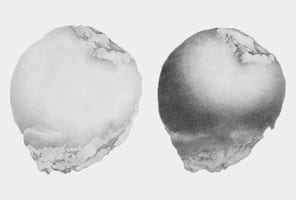
Overtime, the build-up of homogentisic acid (HGA) leads to severe early onset osteoarthritis. HGA attacks the bones and cartilage, turning them black and brittle over time. Joints become less able to cope with activities which put them under strain, with the large weight-bearing joints, such as the knees, shoulders, hips and the spine, the worst-affected.
The onset of osteoarthritis can vary greatly from one patient to the next. Typically, patients start complaining of back pain in their 30’s, and knee pain in their 40’s, while hip and shoulder pain often occurs later by their 50’s.¹
It is common for AKU patients to have more than one joint replacement, many having between five and ten joint replacements in their lifetime.
Staying active with light exercise can help slow the progression of osteoarthritis, as it keeps joints healthier. Contact sports, which put strain on the joints, should be avoided. Many patients feel they benefit from swimming and hydrotherapy, reporting reduced joint pain and stiffness. Physiotherapy can also be good for AKU patients. More information can be found on our Self-Management page.
An introduction to alkaptonuria and nitisinone
